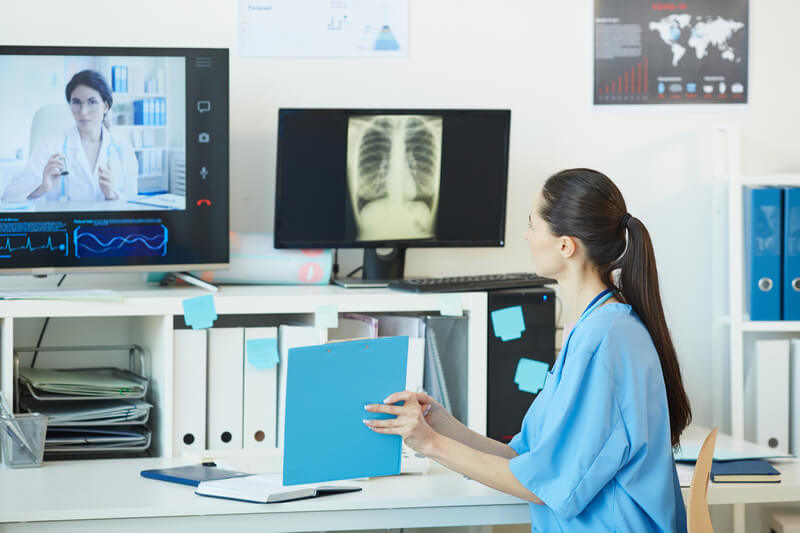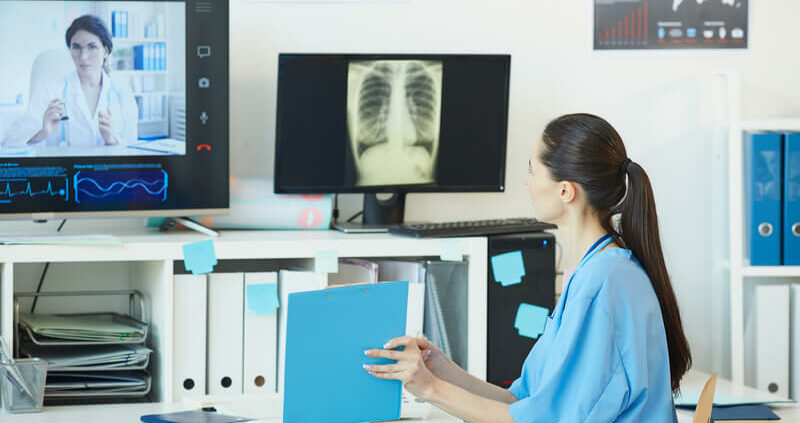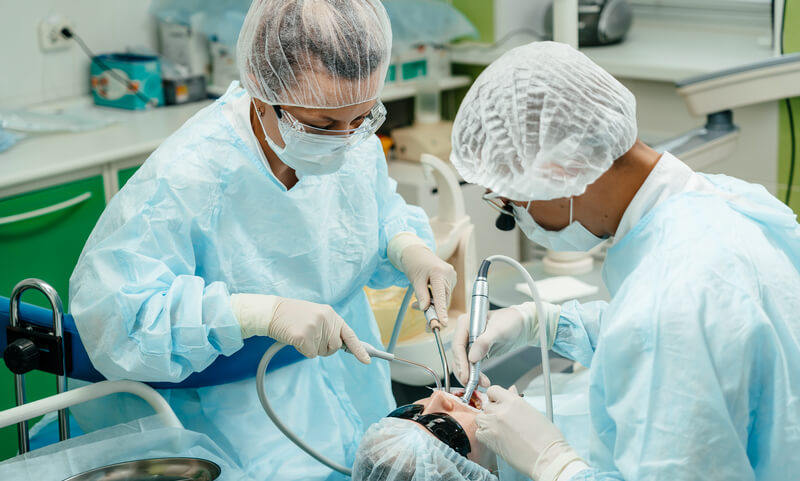5 Benefits of Technology in the Healthcare Industry

Implementing technology into medical enterprises has enriched the lives of many individuals all across the globe. Ranging from the invention of X-ray machines to advancements in surgical techniques, technology has heightened our life expectancy rates by making us healthier.

Through platforms like Lecturio, information technology is formulated to offer personalized, affordable, and adaptive digital medical pedagogy. This will play a significant role in assisting you in acquainting yourself with how technology has upped healthcare.
How Has Technology Promoted Better Healthcare
There are multiple benefits of technology in the healthcare industry, which brings about a rapid shift in improved healthcare. The following are ways technology impacted healthcare.
Genome Sequencing
Genome sequencing is essentially decoding an individual’s genome. For this reason, it is referred to as the future of health care. Medical specialists’ ability to be equipped enough to sequence the human genome is one of the most tremendous in medical technology. The sequence informs scientists on the type of genetic progression carried by a particular segment of DNA.
The provision of genomic information is beneficial in instantly extracting powerful indications and storing them for future detection. This genetic data is used to find the causes and origins of diseases and how to bring about good health.
Remote Monitoring Tools
If patients could monitor their health in their own homes, unnecessary doctor visits will be eliminated, and a lot of money will be saved. Tools such as pacemakers for patients who suffer from heart diseases are programmed to send data to health centers. There are also tools customized for patients living with chronic illnesses, and with them, the patients’ health can be monitored from hospitals irrespective of the distance.
Basically, these tools oversee the supervising improvements and breakdowns of patients with preexisting conditions requiring keen and close monitoring, which cuts in half the workload that would have otherwise been involved. Their ability to record this data and billing is an added advantage.
Telemedicine / Telehealth
In remote areas where health care services and hospitals are a bit easy to access, patients can communicate with doctors virtually through their phones and computers. This way, the medical expenses are a lot more substantial.
- Telemedicine: this refers to the utilization of electronic communication and IT to provide medical services for patients situated in remote areas. Remote medical evaluations and diagnoses, virtual consultations, and digital transmission of medical imaging are all illustrations of telemedicine.
- Telehealth: telehealth technology allows the remote review and diagnosis of patients and the proficiency for distant detection of oscillations in patients’ medical conditions to alter the specific therapy and medications accordingly. Telehealth also facilitates e-prescribe treatments remotely.
Wearable Technology
Technology has introduced wearable medical tools, and they are rapidly taking root in the medical market. These wearables are a category of electrically powered devices that could be implanted in the user’s body, accessories, tattooed on the skin, or embedded in clothing.
They do not require any manual operation and are microprocessor powered and can receive and transmit data through the internet to allow users to monitor their health. Wearable devices are used to gather data that will aid patients, and doctors will need to assess and regulate the wearer’s health. These devices are featured to notify the authorities of acute medical crises.
Electronic Health Records (EHRs)
Any medic will confess that electronic health records are an immensely significant advancement in the healthcare field. It promotes a myriad of upgrades in medical treatment and diagnostics. Unlike in the past, where medical records were clumsily handled, EHRs enable fast information, recording, storage, and transfer of medical files and efficient care integration.
However, many healthcare providers have to use additional solutions in order to use EHRs effectively. Proper patient identification is still a huge issue within the healthcare system due to the lack of an effective patient identifier. As a result, patient mix-ups, duplicate medical records, and patient safety issues are quite common. To prevent all that, responsible caregivers are using innovative solutions like biometric patient identification platforms and RightPatient leads the pack. It is a touchless solution that prevents HAIs (hospital-acquired infections), protects patient data, and enhances patient safety effectively.
To Sum it All Up
Over time, we continue to formulate strategies to promote the quality of our lives and cure ailments. Advancements in the field of medicine through technology have certified numerous life-saving strategies. Imagine being able to have an appointment with your doctor virtually with thousands of miles between you when a few decades ago, it was entirely impossible. Technology is nothing but an asset in the healthcare industry.









Leave a Reply
Want to join the discussion?Feel free to contribute!